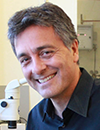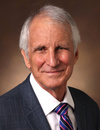Co-Located Conference AgendasLab-on-a-Chip and Microfluidics 2020 | Organ-on-a-Chip 2020 | Point-of-Care Diagnostics, Global Health & Biosensors 2020 | 

Monday, 28 September 2020 |
Start and Introduction to the Virtual Conference [All Times are Pacific Times] |
| | 13:30 |  | Conference Chair Welcome, Introduction, Topics Addressed and Conference Opening by Conference Chairperson
Leanna Levine, Founder & CEO, ALine, Inc., United States of America
|
| 14:00 |  | Keynote Presentation Microfluidics for Interrogating Intact-Tumor Biopsies
Albert Folch, Professor of Bioengineering, University of Washington, United States of America
Cancer remains a major healthcare challenge worldwide. It is now well established that cancer cells constantly interact with fibroblast cells, endothelial cells, immune cells, signaling molecules, and the extracellular matrix in the tumor microenvironment (TME). Present tools to study drug responses and the TME have not kept up with drug testing needs. The number of clinical trials of combination therapies has been climbing at an unsustainable rate, with 3,362 trials launched since 2006 to test PD-1/PD-L1-targeted monoclonal antibodies alone or in combination with other agents. We have developed a microfluidic platform (called Oncoslice) for the delivery of multiple drugs with spatiotemporal control to live tumor biopsies, which retain the TME. We have developed the use of Oncoslice for the delivery of small-molecule cancer drug panels to glioblastoma (GBM) xenograft slices as well as to slices from patient tumors (GBM and colorectal liver metastasis). In addition, we have developed a precision slicing methodology that allows for producing large numbers of cuboidal micro-tissues (“cuboids”) from a single tumor biopsy. We have been able to trap cuboids in arrays of microfluidic traps in a multi-well platform. This work will potentially allow for the high-throughput application of drugs to intact human tumor tissues.
|
| 14:30 |  | Keynote Presentation Microfluidic Technologies For Liquid Biopsy
Daniel Chiu, A. Bruce Montgomery Professor of Chemistry, University of Washington, United States of America
This presentation will describe microfluidic technologies we developed
for liquid biopsy and precision medicine. Specifically, a rare-cell
isolation instrument we call eDAR (ensemble decision aliquot ranking), a
nanofluidic technology for the high-sensitivity sorting of exosomes,
and a digital-nucleic-acid detection and analysis platform based on our
SD (self-digitization) chip. I will outline the workings of these
microfluidic platforms, describe their performance, and discuss the
clinical questions we are addressing with these technologies. |
| 15:00 |  | Keynote Presentation Precision Biology: Deep Profiling of Single Cells Using Electrophoretic Cytometry
Amy Herr, Professor, University Of California Berkeley, United States of America
Underpinning single-cell measurement tools, microfluidic design offers
the throughput, multiplexing, and quantitation needed for rich,
multi-dimensional data. Genomics and transcriptomics are leading
examples. Yet, while proteins are the dynamic, downstream effectors of
function, the immunoassay remains the de facto standard (flow cytometry,
mass cytometry, immunofluorescence). We posit that to realize the full
potential of high-dimensionality cytometry, new approaches to protein
measurement are needed. I will describe our ‘electrophoretic cytometry’
tools that increase target selectivity beyond simple immunoassays.
Enhanced selectivity is essential for targets that lack high quality
immunoreagents – as is the case for the vast majority of protein forms
(proteoforms). I will share our results on highly multiplexed
single-cell western blotting and single-cell isoelectric focusing that
resolves single charge-unit proteoform differences. In fundamental
engineering and design, I will discuss how the physics and chemistry
accessible in microsystems allows both the “scale-down” of
electrophoresis to single cells and the “scale-up” to concurrent
analyses of large numbers of cells. Precise reagent control allows for
integration of cytometry with sophisticated sample preparation – the
unsung hero of measurement science. Lastly, I will link our
bioengineering research to understanding the role of protein signaling
and truncated isoforms in development of breast cancer drug resistance
and understanding protein signaling in individual circulating tumor
cells. Taken together, we view microfluidic design strategies as key to
advancing protein measurement performance needed to address unmet gaps
in quantitative biology and precision medicine. |
| 15:30 | Afternoon Break | 16:00 |  | Keynote Presentation Microengineering a Physiologic Colon Replica
Nancy Allbritton, Frank and Julie Jungers Dean of the College of Engineering and Professor of Bioengineering, University of Washington in Seattle, United States of America
Organ-on-chips are miniaturized devices that arrange living cells to simulate functional subunits of tissues and organs. These microdevices provide exquisite control of tissue microenvironment for the investigation of organ-level physiology and disease. A 3D polarized epithelium using primary human gastrointestinal stem cells was developed to fully recapitulate gastrointestinal epithelial architecture and physiology. A planar monolayer comprised of stem/proliferative and differentiated primary cells is cultured on a shaped hydrogel scaffold with an array of crypt-like structures replicating the intestinal architecture. These planar layers display physiologic drug transport and metabolism and immunologically appropriate responses. Facile co-culture with other cell types such as immune cells or myofibrolasts is readily achieved. A dense mucus layer is formed on the luminal epithelial surface that is impermeable to bacteria and acts a barrier to toxins. The in vitro mucus has remarkably similar in its biophysical properties to that produced in vivo. Imposition of chemical gradients across the crypt long axis yields a polarized epithelium with a stem-cell niche and differentiated cell zone. The stem cells proliferate, migrate and differentiate along the crypt axis as they do in vivo. An oxygen gradient across the tissue mimic permits luminal culture of anaerobic bacteria while maintaining an oxygenated stem cell niche. This in vitro human colon crypt array replicates the architecture, luminal accessibility, tissue polarity, cell migration, and cellular responses of in vivo intestinal crypts. This bioanalytical platform is envisioned as a next-generation system for assay of microbiome-behavior, drug-delivery and toxin-interactions with the intestinal epithelia. |
| 16:30 |  | Keynote Presentation Workflow Automation with Digital and Customizable Microfluidics: Challenges and Opportunities
Anita Rogacs, Head of Life Sciences Strategy and R&D, HP Labs, United States of America
Life Sciences analytical workflows benefit greatly from microfluidic automation, leading to improvement in accuracy, multiplexing, efficiency, and cost. Yet microfluidics has faced significant barriers to adoption in both diagnostics and drug discovery, due to constrained designs and long and costly development pipelines. HP is addressing this challenge by leveraging our digital and customizable mode of microfluidics, eliminating the need to design a “new chip” for every new workflow, target and reagent. |
| 17:00 |  Valves in Microfluidics – Past, Present & Future Valves in Microfluidics – Past, Present & Future
Leanna Levine, Founder & CEO, ALine, Inc.
Managing fluid movement in a controlled way is conveniently done with on-board valves that are actuated externally with the support of an instrument. In this talk, I will review the types of valves available and the pros and cons of different approaches and their consequences for complexity in the supporting instrument.
| 17:30 |  | Keynote Presentation Exploiting Cardiac Microphysiological Systems For COVID-19 Drug Screening
Kevin Healy, Jan Fandrianto and Selfia Halim Distinguished Professorship in Engineering, University of California, Berkeley, United States of America
Our work has emphasized creating both healthy and diseased cardiac and liver microphysiological systems (MPS) or ‘organ chips’, to address the costly and inefficient drug discovery process. While MPS are poised to disrupt the drug development process and significantly reduce the cost of bringing a new drug candidate to market, the technology is more robust and creates a whole new paradigm in how to conduct safety pharmacology science, and advances medicine in revolutionary ways. An emerging use of MPS is in the evaluation of repurposed drugs to treat COVID-19. While repurposed drugs are typically FDA-approved for monotherapy, most have not been tested in polytherapy with anti-inflammatory or antibiotic medications typically employed as part of intensive care protocols. Since COVID-19 patient morbidity is highly correlated with myocardial injury, independent of pre-existing cardiovascular disease, this presentation will address examples of exploiting our human cardiac MPS as unique testbeds for rapidly assessing the cardiac liability of polytherapy of repurposed COVID-19 drugs. Preclinical data generated will inform clinical trial design for polytherapies for COVID-19 patients, particularly regarding risks of potential drug-drug interactions or identifying appropriate exclusion criteria, monitoring strategies, and dose adjustments to minimize cardiac liabilities. |
| 18:00 | Close of Day 1 of the Conference |
Tuesday, 29 September 2020 |
Day 2 of the Conference [All Times are Pacific Times] |
| | 09:00 |  | Keynote Presentation Body on a Chip: Human Microscale Models for Drug Development
Michael Shuler, Samuel B. Eckert Professor of Engineering, Cornell University, President Hesperos, Inc., United States of America
Integrated, multi-organ microphysiological systems (MPS) based on human tissues (also known as “human-on-a-chip”) could be important tools to improve the selection of drug candidates most likely to earn regulatory approval from clinical trials. Such microscale systems combine organized human tissues with the techniques of microfabrication based on PBPK (Physiologically Based Pharmacokinetic) models. I will describe such systems being constructed at Hesperos and at Cornell. They are “self-contained” in that they can operate independently and do not require external pumps as is the case with many other microphysiological systems. They are “low cost”, in part, because of the simplicity and reliability of operation. They maintain a ratio of fluid (blood surrogate) to cells that is more physiologic than in many other in vitro systems allowing the observation of the effects of not only drugs but their metabolites. While systems can be sampled to measure the concentrations of drugs, metabolites, or biomarkers, they also can be interrogated in situ for functional responses such as electrical activity, force generation, or integrity of barrier function. Operation up to 28 days has been achieved allowing observation of both acute and chronic responses with serum free media. We have worked with various combinations of internal organ modules (liver, fat, neuromuscular junction, skeletal muscle, cardiac, bone marrow, blood vessels and brain) and barrier tissues (eg skin, GI tract, blood brain barrier, lung, and kidney). We have achieved unidirectional flow in a pumpless system which is important for mimicking the response of vascular tissues and constructed blood brain mimics with human in vitro like characteristics. The use of microelectrode arrays to monitor electrically active tissues (cardiac and neuronal) and micro cantilevers (muscle) have been demonstrated. While most systems use 5 or fewer organ modules, we have demonstrated that a 13 “organ” compartment device can be constructed demonstrating the potential to address a wide range of problems in pharmacology and toxicology in a low cost system. Most importantly these technical advances allow prediction of both a drug’s potential efficacy and toxicity (side-effects) in pre-clinical studies and have been applied to circulating immune cells. |
| 09:30 |  Real-Time Sensing of pH and Dissolved Oxygen in Microfluidics Devices Real-Time Sensing of pH and Dissolved Oxygen in Microfluidics Devices
Jake Boy, Senior Application Scientist, Scientific Bioprocessing
Real-time sensing of critical cell culture parameters continues to be a major challenge in tissue/organ-on-a-chip systems. While electrochemical probes have been used for decades in large bioreactor systems, use of these probes in microfluidics systems is prohibitive due to form factor challenges. Optical sensor technologies have enabled non-invasive, real-time sensing that can be tailored to a wide range of custom microfluidic bioreactor systems. In this presentation, we describe application examples that utilize pH and dissolved oxygen sensors developed with state-of-the-art fluorescence technology. The sensors support long-term cultures in the order of weeks that are typical for engineered tissue and organ model development and can be used either for monitoring or for monitoring and control through closed loop feedback.
| 10:00 |  Novabiosis: Supplying Primary Human Cells for Research Novabiosis: Supplying Primary Human Cells for Research
Matthew Shipton, Vice President and General Manager, Novabiosis
I will cover human organ procurement, isolation of primary cell products, and how we characterize and supply these cells for research.
| 10:30 | MPS for Co-culture of 4 Organs with 80 µL of Recirculating Medium
Mandy Esch, Project Leader, National Institute of Standards and Technology (NIST), United States of America
We have developed a 3D microphysiological cell culture platform that supports the culture of four human tissues (kidney, GI tract, liver, and bone marrow, scaled 1/73,000) with physiological amounts of blood surrogate (80 µL of cell culture medium). | 11:00 |  Modeling and Simulation of Microfluidic Organ-on-a-Chip Devices Modeling and Simulation of Microfluidic Organ-on-a-Chip Devices
Matthew Hancock, Managing Engineer, Veryst Engineering, LLC
Modeling and simulation are key components of the engineering development process, providing a rational, systematic method to engineer and optimize products and dramatically accelerate the development cycle over a pure intuition-driven, empirical testing approach. Modeling and simulation help to identify key parameters related to product performance (“what to try”) as well as insignificant parameters or conditions related to poor outcomes (“what not to try”). For microfluidic organ-on-chip devices, modeling and simulation can inform the design and integration of common components such as mixers, micropumps, manifolds, and channel networks. Modeling and simulation may also be used to estimate a range of processes occurring within the fluid bulk and near cells, including shear stresses, transport of nutrients and waste, chemical reactions, heat transfer, and surface tension & wetting effects. I will discuss how an array of modeling tools such as scaling arguments, analytical formulas, and finite element simulations may be leveraged to address these microfluidic organ-on-a-chip device development issues. I will also work through a few examples in detail.
| 12:00 |  | Keynote Presentation “Bone Marrow-on-a-Chip”: Replicating Hematopoiesis and Investigating the Impact of Ionizing Radiation
Steven C. George, Edward Teller Distinguished Professor and Chair, Department of Biomedical Engineering, University of California-Davis, United States of America
Tissue engineering holds enormous potential to not only replace or restore function to a wide range of tissues, but also to capture and control 3D physiology in vitro (e.g., microphysiological systems or “organ-on-a-chip” technology). The latter has important applications in the fields of drug development, toxicity screening, modeling tumor metastasis, and repairing damaged cardiac (heart) muscle. In order to replicate the complex 3D arrangement of cells and extracellular matrix (ECM), new human microphysiological systems must be developed. The past decade has brought tremendous advances in our understanding of stem cell technology and microfabrication producing a rich environment to create an array of “organ-on-a-chip” designs. Over the past six years we have developed novel microfluidic-based systems of 3D human microtissues (~ 1 mm3) that contain features such as perfused human microvessels, primary human cancer, mouse tumor organoids, stem cells, and spatiotemporal control of oxygen. The technologies are part of two early start-up companies, Kino Biosciences and Immunovalent Therapeutics, based in Irvine, CA and St. Louis, MO. This seminar will describe our approach to create a 3D in vitro model of human bone marrow to assess the impact of ionizing radiation. |
| 12:30 | Lunch Break | 14:00 |  | Keynote Presentation Metastasis on a Chip: Effects of Intravascular and Transendothelial Flow
Roger Kamm, Cecil and Ida Green Distinguished Professor of Biological and Mechanical Engineering, Massachusetts Institute of Technology (MIT), United States of America
Circulating tumor cells (CTC) experience a hostile environment due circulating immune cells and the forces combined with vascular shear stress and pressure gradients. In this study, we examine flow effects on CTC adhesion, migration and transendothelial migration. Many CTCs fail to survive the voyage from the primary tumor to the metastatic site, and die before they can initiate a new tumor. Others not only survive, but enter into the tissue where some fraction proliferate and spread. We studied the effects of vascular flows, both intravascular (IVF) and transendothelial (TEF) on tumor cell adhesion, migration and transendothelial migration with the goal of better understanding how flow either promotes or impedes metastasis. Our results show that CTCs migrate or are dragged in the direction of flow prior to trans-endothelial migration. We also observe enhanced potential for TEM due to IVF. TEF, on the other hand, has little effect on either migration along the luminal surface of the endothelium or the propensity to undergo trans-endothelial migration, but hastens the process once initiated. Moreover, TEF increased the migration speed of tumor cells post-extravasation, and caused the cells to remain close to the outer endothelial surface. In summary, both types of flow tend to promote a pro-metastatic phenotype. |
| 14:30 | Tissue Organoids for Disease Modeling
Shay Soker, Professor of Regenerative Medicine and Chief Science Program Officer, Wake Forest Institute for Regenerative Medicine, United States of America
Traditional in vitro two dimensional (2D) cell cultures fail to recapitulate the microenvironment of in vivo tissues. They have three major differences from native tissue microenvironments: substrate topography, substrate stiffness, and most importantly, a 2D rather than three dimensional (3D) architecture. In contrast, 3D human tissue organoids replicate native tissue structure and function and thus are superior to traditional 2D cultures and animal models. These organoids can be studied in vitro for several weeks to allow intensive investigations. Besides their advantages in drug toxicity testing and for development of new drugs, the human tissue organoid platform serves as a model system to explore human tissue development and disease. Our recent research was focused on the use of human tissue organoids to study liver development and congenital diseases as well as other common diseases such as tissue fibrosis and cancer. Altogether our human tissue organoids system can be used for modeling of a wide verity of diseases and develop new personalized/precision medicine applications. | 15:00 |  | Keynote Presentation The Biological and Technical Challenges of MicroPhysiological Systems: Past, Present, and Future
John Wikswo, Gordon A. Cain University Professor, A.B. Learned Professor of Living State Physics; Founding Director, Vanderbilt Institute for Integrative Biosystems, Vanderbilt University, United States of America
We must celebrate a decade of microphysiological systems (MPS) research in the US that began with the 2010 papers on Shuler’s and Esch’s body on a chip and the Huh’s, Ingber’s, and colleagues’ lung on a chip, received critical funding impulses from FDA, DARPA, NIH, and DTRA, and was forged by NIH/NCATS into a large, functional community. NASA, EPA, and other agencies are expanding the scope of research. Academic groups are publishing more than a thousand papers a year and there are more than a dozen companies in the US and Europe offering single- and multiple-organ chips and platforms. Now would be a good time to assess how well MPS researchers have addressed the engineering challenges for instrumenting and controlling integrated organ-on-chip systems that I enumerated in 2013, compare the capabilities and weaknesses of organoids and tissue chips, and assess the current and future value of coupled organ systems. As we address the early challenges, some remain and new ones appear: How do we obtain or create the appropriate cells? How do we build low-cost, disposable pumps and valves to perfuse and couple organ chips? What are our alternatives to PDMS? How do we acquire and analyze the data required for quantitative characterization of our MPS models? How do we recapitulate the adaptive immune system? What are our capabilities to control, rather than just observe, MPS models? How do we address the complexity, for example, of the neurohumeral connections between the microbiome-gut-immune-liver-brain axis in development, health, aging, and disease and with exposure to pathogens and toxins? All of these technologies should help us close the hermeneutic circle of biology, particularly now that we are within striking distance of being able to create robot scientists that can operate 10,000 independent, parallel MPS models and use optimum design-of-experiment techniques to generate and test hypotheses about biological regulation. The second MPS decade should be productive and exciting. |
|
|


 Add to Calendar ▼2020-09-28 00:00:002020-09-30 00:00:00Europe/LondonOrgan-on-a-Chip 2020Organ-on-a-Chip 2020 in Virtual ConferenceVirtual ConferenceSELECTBIOenquiries@selectbiosciences.com
Add to Calendar ▼2020-09-28 00:00:002020-09-30 00:00:00Europe/LondonOrgan-on-a-Chip 2020Organ-on-a-Chip 2020 in Virtual ConferenceVirtual ConferenceSELECTBIOenquiries@selectbiosciences.com